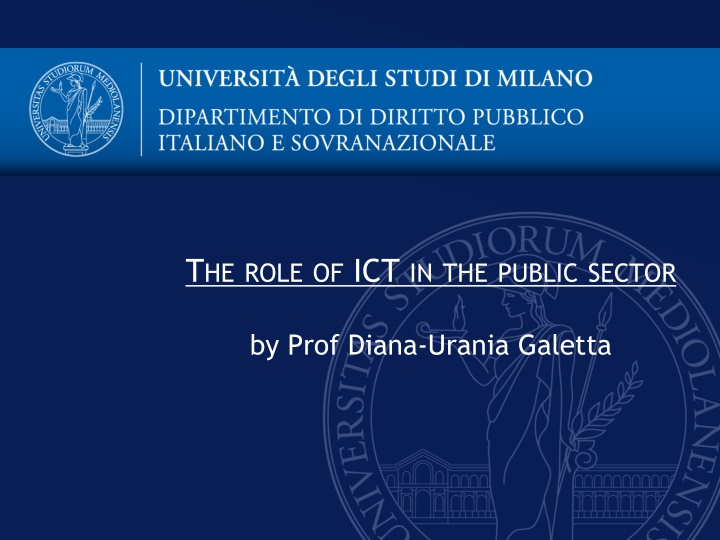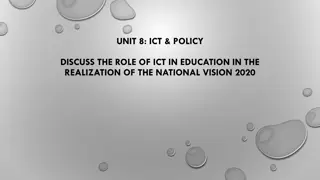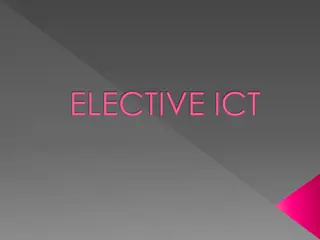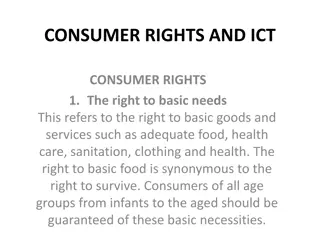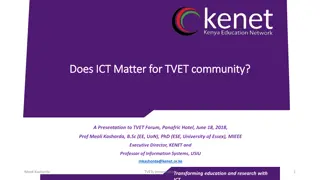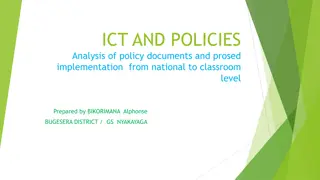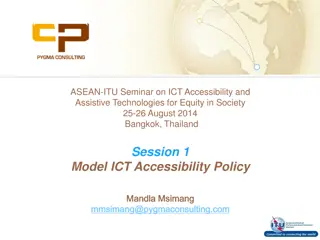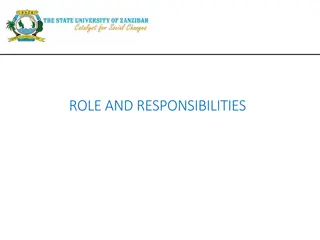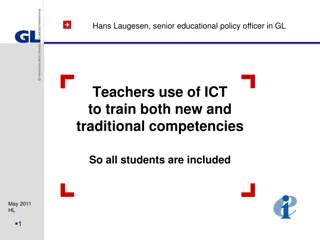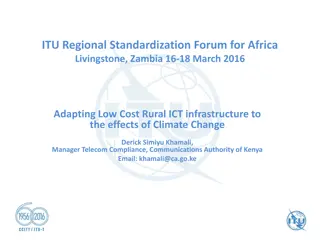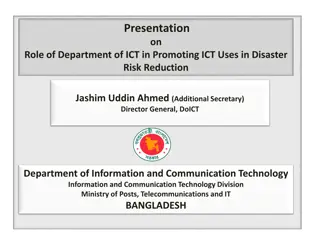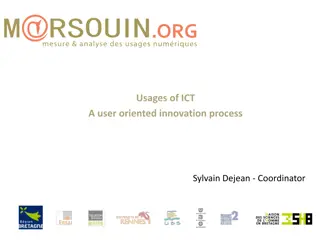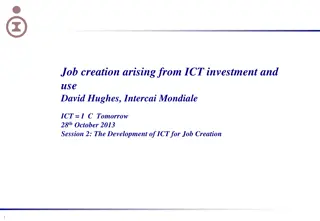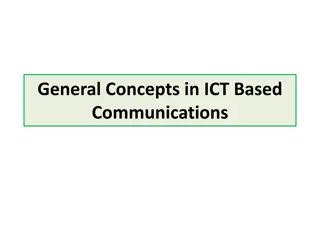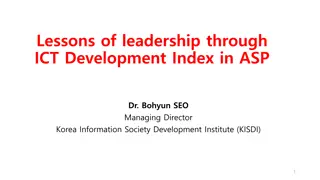The Role of ICT in Public Administration Transition
Digitization in the public sector can occur per administration or per procedure basis. This involves implementing technological tools to support activities, either at the authority level or across the entire administrative process. Both approaches have their pros and cons, impacting simplicity, coordination, and the ability to achieve full digitization. Digitization should be seen as a tool to enhance administrative processes, without fundamentally changing traditional concepts of administrative law.
Download Presentation

Please find below an Image/Link to download the presentation.
The content on the website is provided AS IS for your information and personal use only. It may not be sold, licensed, or shared on other websites without obtaining consent from the author.If you encounter any issues during the download, it is possible that the publisher has removed the file from their server.
You are allowed to download the files provided on this website for personal or commercial use, subject to the condition that they are used lawfully. All files are the property of their respective owners.
The content on the website is provided AS IS for your information and personal use only. It may not be sold, licensed, or shared on other websites without obtaining consent from the author.
E N D
Presentation Transcript
THE ROLE OF ICT IN THE PUBLIC SECTOR by Prof Diana-Urania Galetta
Digitizing Public Administration? In what sense exactly? In the transition towards a digitized public administration two approaches can be followed: A) digitization on a per-administration basis; or B) digitization on a per-procedure basis. Prof.ssa Diana-Urania GALETTA
A) Digitization of Public Administrations The digitization process is carried out by defining the technological tools that have to be implemented to support all the activities of each authority The process would be carried out by digitizing all activities carried out by the specific Authority, without considering interactions with other public administrations Prof.ssa Diana-Urania GALETTA
B) Digitization of administrative procedures It involves a cross-cutting approach, which leads to the digitization of a particular process in its entirety, from the first act, until the issuance of the final administrative act. Prof.ssa Diana-Urania GALETTA
Pros and cons Both approaches have pros and cons. A) PROS: - simpler approach - internal per-procedure basis A) CONS - fragmentation - coordination needed - inability to achieve full digitization Prof.ssa Diana-Urania GALETTA
Pros and cons Both approaches have pros and cons. B) PROS: - procedural guarantees - legality of action - full digitization - reuse CONS - more complex - one procedure at a time Prof.ssa Diana-Urania GALETTA
Methodological issues Digitization as a tool, not as a goal A merely reshaping of the internal productive processes: a different way to perform administrative tasks! The classical concepts of administrative law (administrative procedure, administrative act, etc.) won t change because of ICT! Prof.ssa Diana-Urania GALETTA
Balancing costs and benefits The creation, development and maintenance of each technology solution has costs Just a matter of PROPORTIONALITY!! costs benefits Prof.ssa Diana-Urania GALETTA
Technology for better service delivery? The transparency point of view Right to good administration and administrative transparency in the sense of: 1) Possibility to allow broader participation 2) Possibility to enhance the role of the responsible member of staff 3) Easier access to documents concerning specific administrative procedures Prof.ssa Diana-Urania GALETTA
DIGITAL DIVIDE: Prof.ssa Diana-Urania GALETTA
